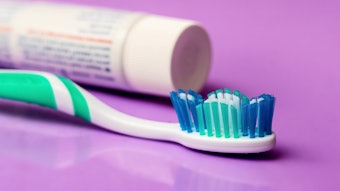Does a discussion of tooth remineralization belong in a publication devoted to cosmetic technology? It does because of its contribution to cleansing, whitening and tooth retention. Add the claimed reductions in dental caries and tooth sensitivity and the fact that remineralization is a natural part of life on a tooth surface, and you have the components of a healthy smile.
Life on a tooth surface is a constant battle between acids and minerals on a field of enamel composed of the natural calcium carbonate hydroxyapitate. The minerals are primarily calcium and phosphorus delivered regularly by saliva. The acids are produced by bacteria breaking down sugars from food. The acids can slip through the tooth’s enamel and dissolve the minerals immediately below the surface. Usually, saliva replaces calcium phosphate in the tooth at the rate it dissolves. Under cavity-forming conditions, however, acids in plaque dissolve the mineral more quickly than the saliva can replace it.
Technologies and treatments have been developed to help saliva do its job. Fluoride is a well known example. Fluoride replaces hydroxyl ions in the hydroxyapatite, converting it to the more acid-resistant fluorapatite. Technologies to supplement the saliva’s calcium and phosphorus supply are more recent. These remineralization techniques are the subject of the rest of this article.
Established Calcium Phosphate Technologies
Several remineralization products using calcium phosphate technologies have made it to the mass and professional markets. The chewing gum and enamel care toothpaste mentioned below are two such examples. Four successful calcium phosphate remineralization technologies will be discussed. They add calcium and phosphorus to encourage remineralization at a rate that is faster than mineral loss.
Amorphous calcium phosphate: Amorphous calcium phosphate (ACP) is an inorganic material made by combining soluble salts of calcium and phosphorus. Typically, it is delivered in a two-phase system in which calcium is in one part and phosphate in the other part. Upon mixing, they react to form an ACP material that precipitates onto the tooth surface. ACP is highly soluble, so continuous acid attacks will rapidly wash the calcium and phosphate away. ACP is the remineralization technology used in a mainstream enamel care toothpaste.










